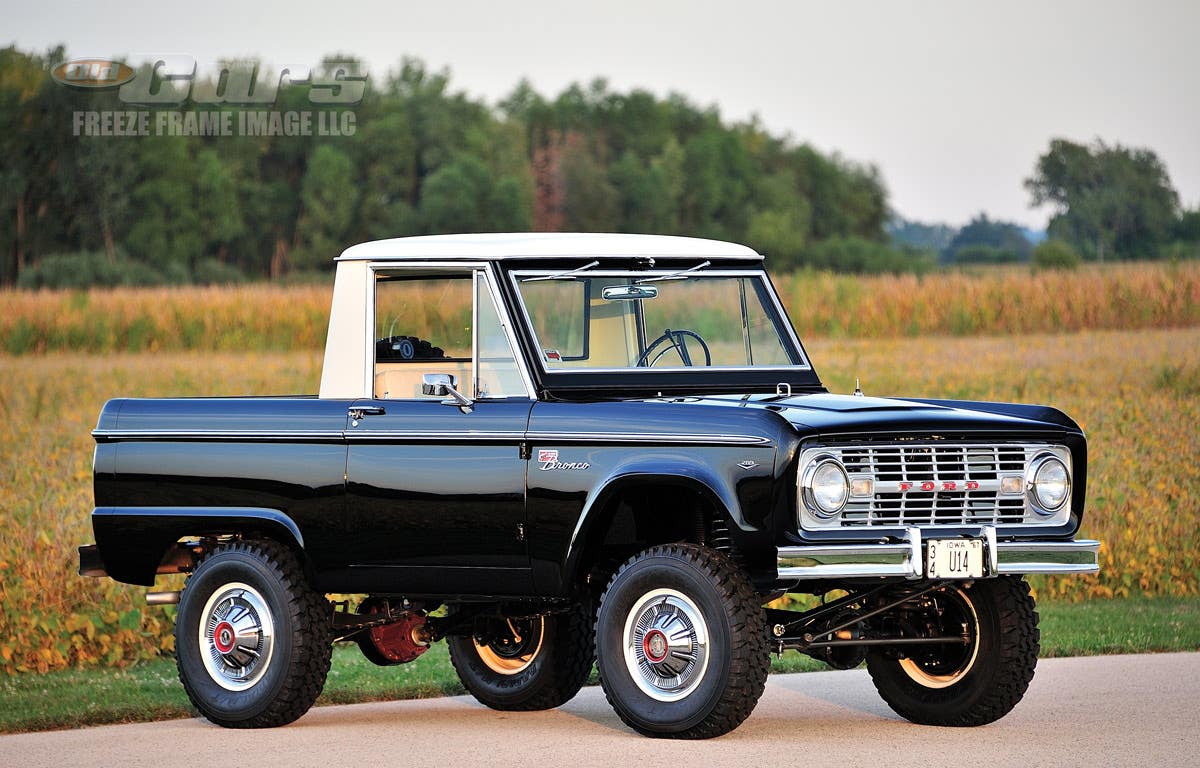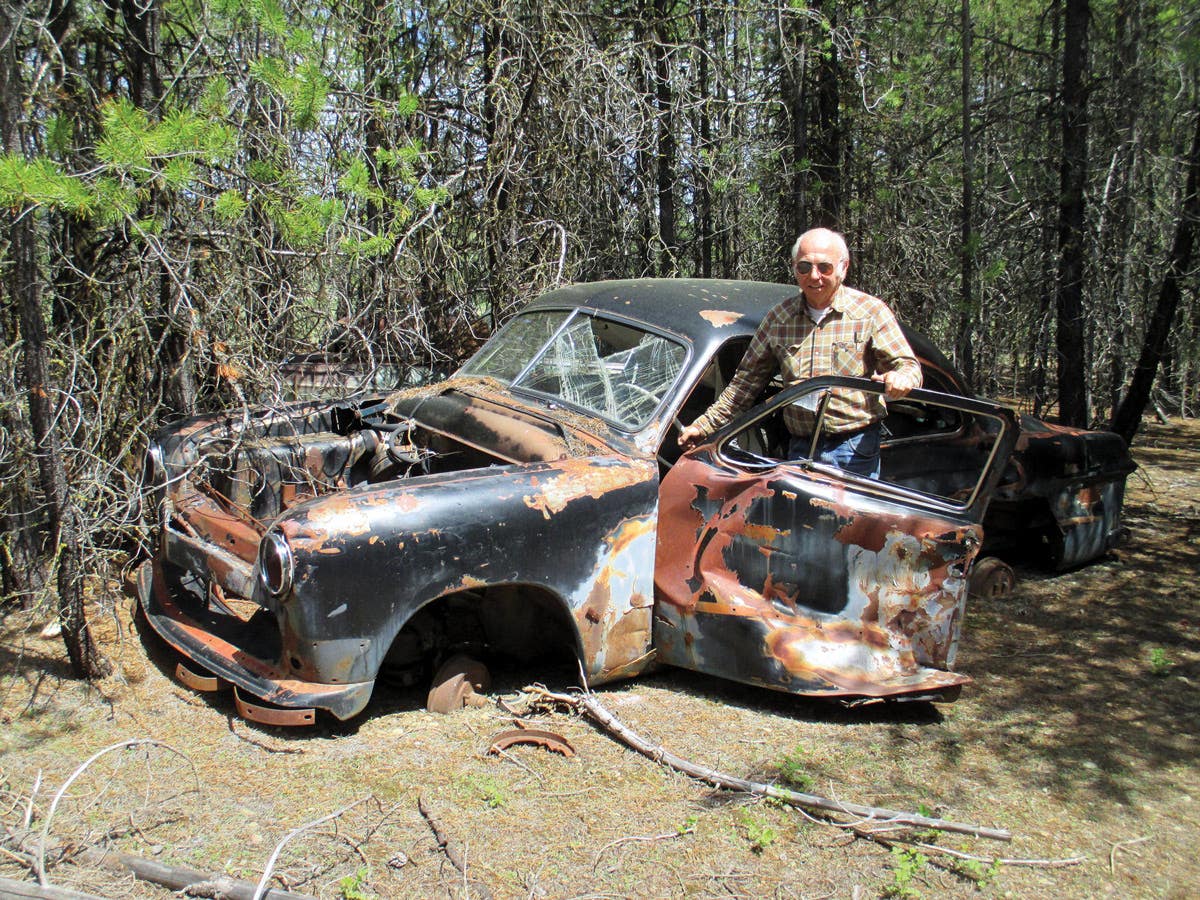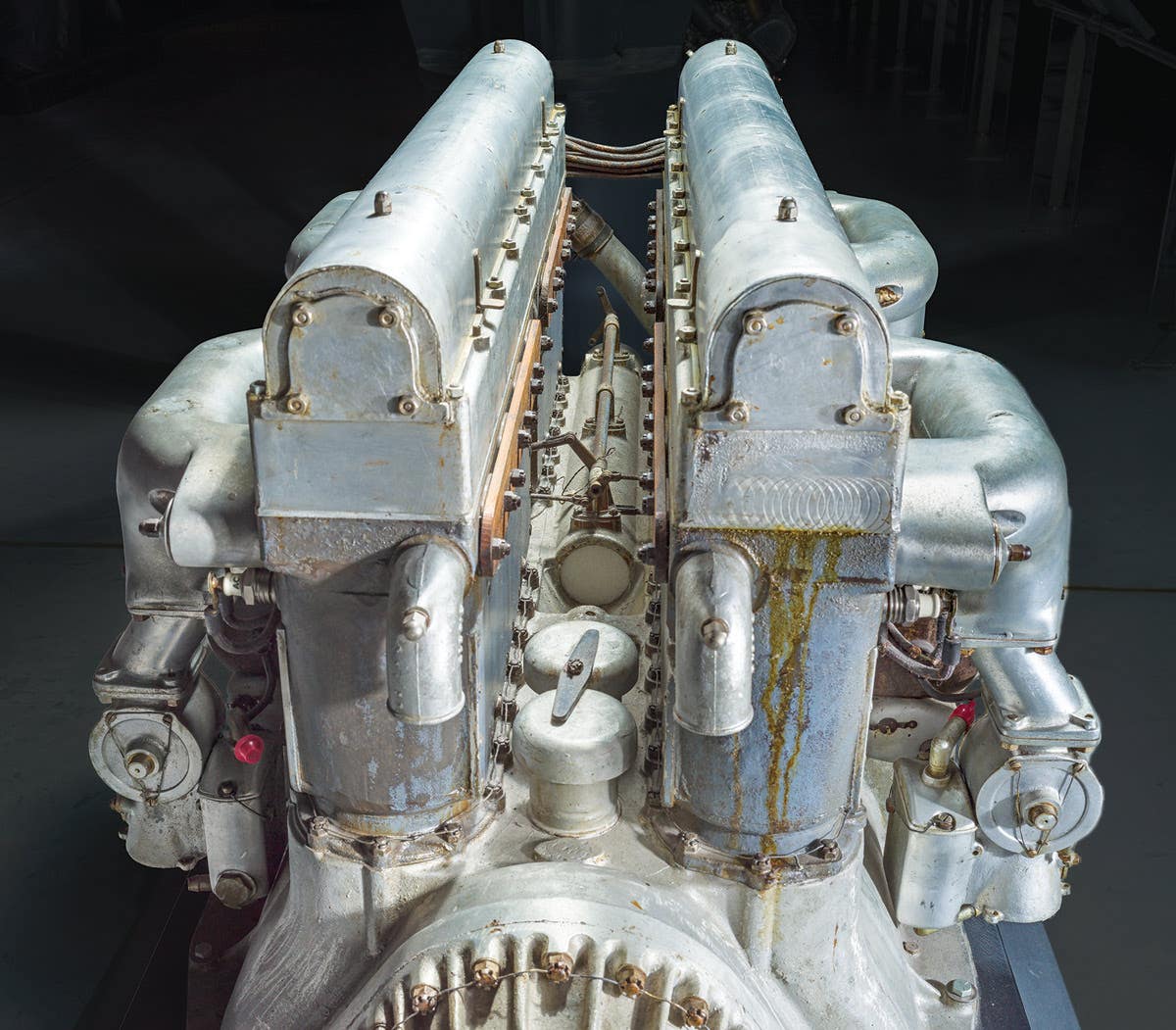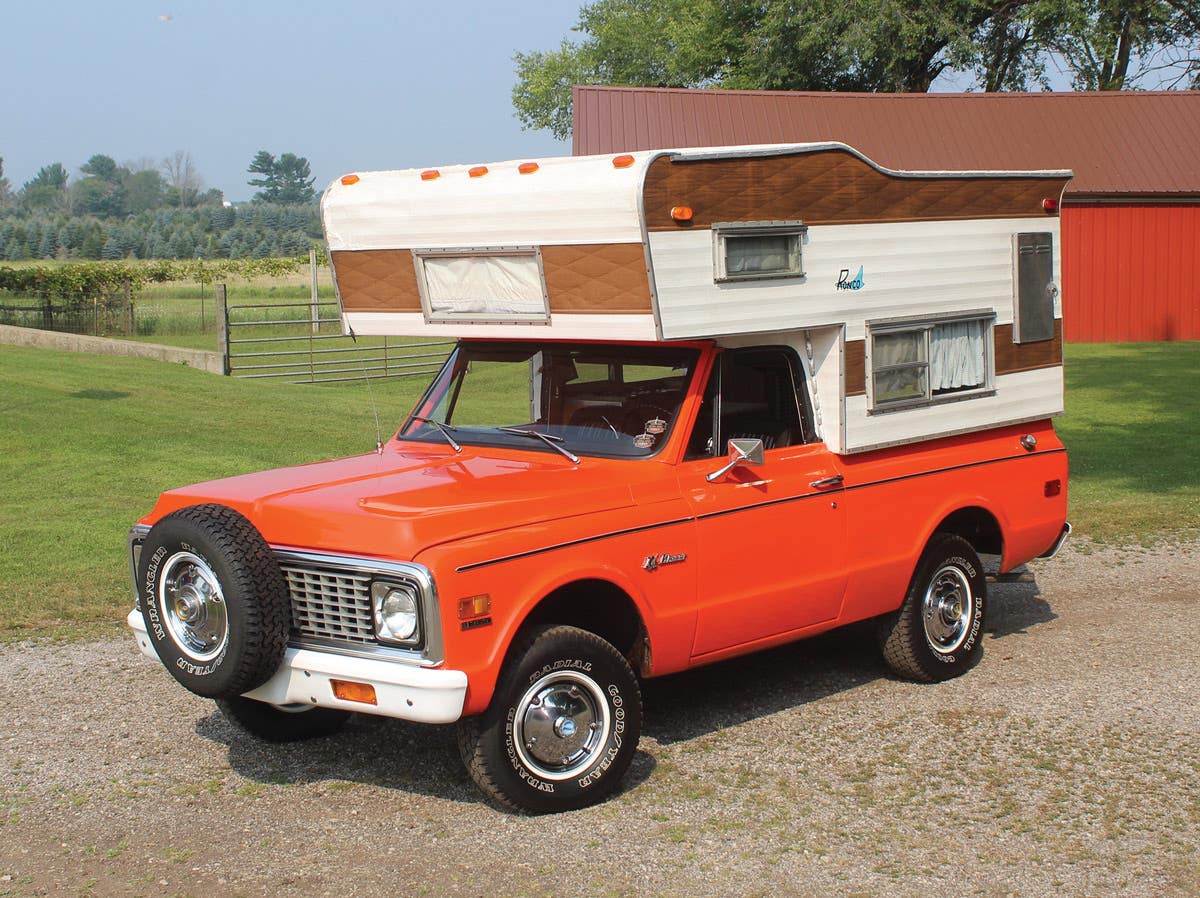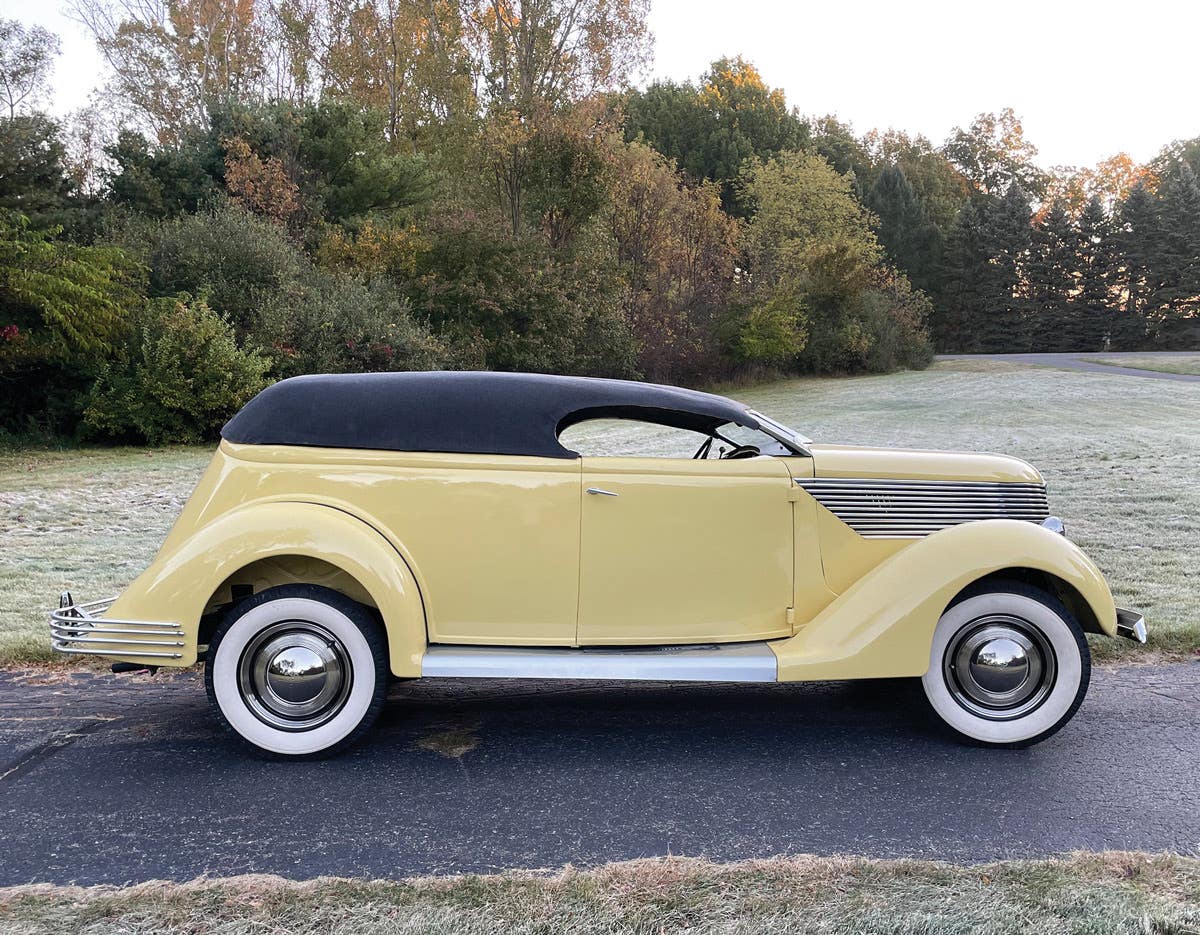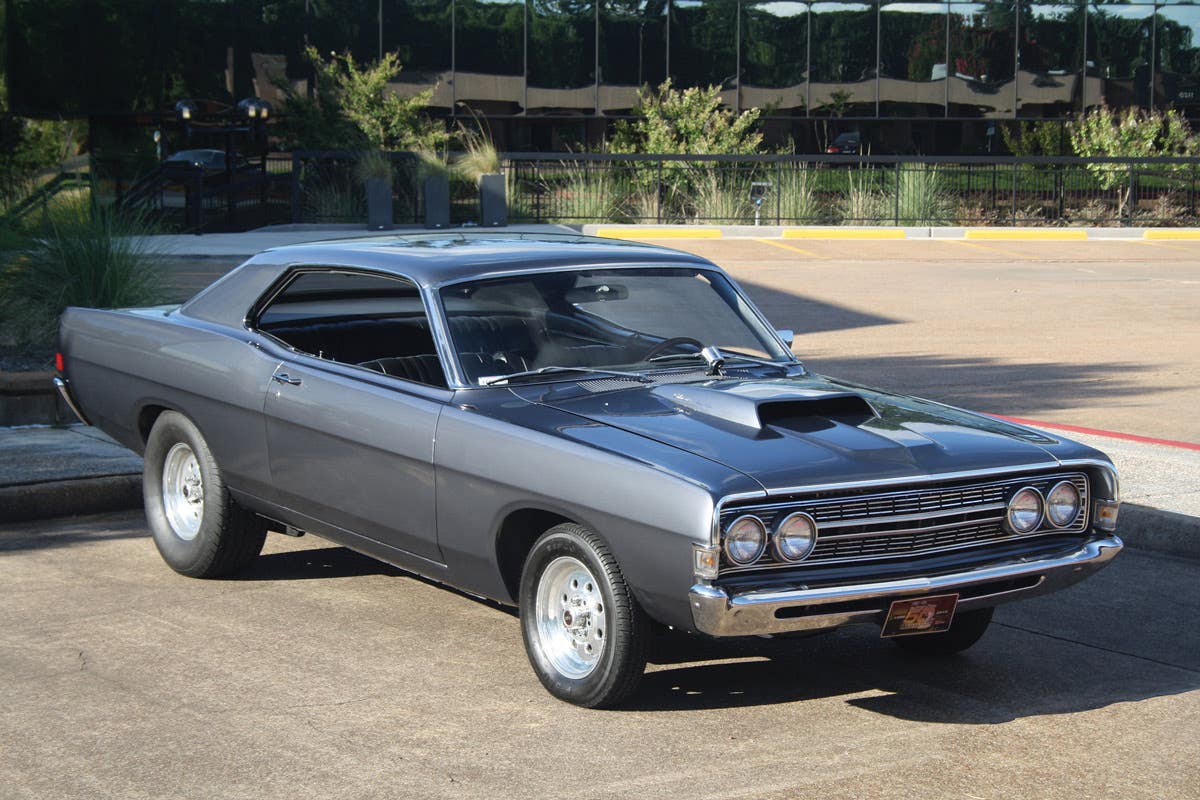Car of the Week: 1929 REO Flying Cloud
Classy 1929 REO Flying Cloud has rewarded its owner with 49 great years.
Dan Koehler has pondered the question many times himself. What would make a young guy decide to take a really old car — a model that he has never even heard of — buy it, drag it home, then immediately tear it all apart. Then, after that, spend 11 years trying to fix up the car.
Some 49 years later, Koehler knows buying his 1929 REO Flying Cloud was probably a ridiculous idea, but he’s darn glad he did. Koehler still has his beautiful REO after all this time, he has stories for days about the car, and not only does he have a gorgeous machine to show anytime the spirit moves him, he’s become a bit of an expert on the long-lost orphan marque.
“I had never heard of REO when I bought it. I thought, ‘Well, it’s different.’ It’s something I’ve never heard of and I thought it was interesting — and it was available!” says Koehler, a resident of Winneconne, Wis. “I’ve always loved cars. Before this, I had a ’65 Impala Super Sport. I had a ’66 Chevelle, and I had a few Chevys. I had a lot of other ones, but I wanted one to restore and I spent the last 49 years on it!
“I bought this car in August of 1975. It was in my wife’s uncle’s garage. It belonged to his brother-in-law at the time, so it was in the family — sort of.”
Over the next decade after hauling the old REO home, Koehler restored the big sedan almost entirely himself, piece by piece. He also found out quickly that taking on such a project can be a whole lot easier if you belong to a club, so he joined the REO Club of America. He eventually became the club’s president in 1992-’93, and is currently serving a second stint in the same role. Not only that, but his interest in the marque rubbed off on his daughter, Kerry, who has also served as club president, and on one of his granddaughters, who has served as a junior officer in the club.
“We’ve belonged to the REO Club since around 1977. I’ve been to every national meet except about six or seven of them. So everyone at the REO Club knows who I am,” he laughs. “No, I never would have guessed it would have turned out like this. We towed it home when I bought it. It was in [nearboy] Darboy and we towed it to Neenah at the time. It wasn’t running. And the first thing I did when I got it home was take it all apart. I had never even driven it!”
Ransom Olds’ Baby
It’s not hard to understand how car guys such as Koehler can get hooked on a car like the REO Flying Cloud. It was definitely a regal machine for its time.
“Packard would probably have been its biggest competition back then,” he says. “This car was about $1,800 new, a Model A Ford was $600. So you could have bought three Model A’s for the price of this car!”
By 1929, the REO Motor Car Co. of Lansing, Mich., had been in business for 24 years, thanks to Ransom E. Olds, a mover and shaker in the American automobile industry who had founded Oldsmobile way back in 1897. Olds left his company in 1905 and launched REO, becoming majority share holder and serving as president and general manager. The company was initially called the R.E. Olds Motor Car Co., but after some legal wrangling over the legality of the use of the Olds name, Olds went with his initials, REO, for his new venture.
Olds ended his first leadership stint with the company in 1923 when he stepped down as president — he had ended his general manager duties in 1915 — but after some questionable decisions by company hierarchy and financial difficulties during the Depression years, Olds returned to lead the company in 1933, but resigned a year later — two years before REO got out of the car business and decided to focus on building trucks.
The most successful and memorable models the company produced were the Flying Cloud, introduced in 1927, and the even fancier and more upscale Royale 8, which arrived in 1931.
The Flying Cloud used a 268-cid L-head six-cylinder engine rated at 65 hp (some sources say it was more like 73) with a seven-bearing crankshaft. The Flying Cloud was the first car in its class to utilize Lockheed’s new internal-expanding hydraulic brake system, which, paired with some body styling by Fabio Gegardi, made it one of the best-looking and most advanced cars on the market. It rode on a 121-inch wheelbase and was available in five models: four-passenger sports roadster, four-passenger coupe, four-passenger Deluxe coupe; five-passenger two-door Brougham, and five-passenger Deluxe sedan.
For 1929, there were two lines of the Flying Cloud offered. The Mate lineup — also referred to as the Model B — used the 115-inch wheelbase chassis and 65-hp engine. The Mate variants came as either a five-passenger sedan or four-passenger coupe. The Flying Cloud Master — or Model C — used the 80-hp power plant and 121-inch wheelbase. The bigger cars were offered as a four-passenger roadster; four-passenger coupe; five-passenger Brougham; five-passenger sedan; and four-passenger victoria.
REO automobile sales peaked at 33,353 in 1927, but dropped to 23,498 a year later, 16,000 in 1929 and eventually fell to just 3,206 by 1936.
REO soldiered on building trucks throughout World War II, but battled more financial difficulties and a bankruptcy. Most of the company’s manufacturing assets became part of the Bohn Aluminum and Brass Corp. of Detroit in 1954, and in 1957 REO became part of the White Motor Co. brand. It was eventually merged with Diamond T Trucks in 1967, becoming Diamond REO Trucks. The final bell tolled for the brand with another bankruptcy in 1975, at which point Volvo acquired the rights to both the White and REO brands.
A Mission Accomplished
Back in 1975, Koehler’s ’29 Flying Cloud Model C sedan was far from the looker it is today. Somehow, it had survived nearly five decades in Wisconsin, relatively intact, but it was a long way from road-worthy. And Koehler says the car was, well, pretty ugly.
“It did run, but not very well. It was all original, but no real rust-though,” he recalls. “But someone had taken the car and taken a can of black paint and a paint brush and painted everything but the glass. The chrome was painted, the body was painted, everything was black. I guess it kind of preserved it, but I didn’t even know the color of the vehicle until I started stripping it.
“The only rust-though was a small spot on the inside of the rear fender. That was the only spot where it was rusted through. There was surfaced rust all over and it had dents. It looked like it had ben turned over, so I’m guessing it had a little over 100,000 [miles]. There was no rear tire carrier. There was no rear bumper. Those, I think, had been broken off, and the whole back end was full of dents. They must have backed until they hit something and then they stopped!” he laughs.
Koehler was able to do some digging and discovered that the car had been originally sold in nearby Green Bay, Wis., and had remained in the area its entire life. He thinks the original owner had it until sometime in the 1950s. After that, it changed hands a few times before winding up with some “relatives of relatives.”
Slowly but surely, Koehler sorted out the car and began getting it back together. He jokes that moving the family to a new home “probably cost me about two years,” but he says he was never in a big hurry anyway. He found a lot of important parts through networking with fellow REO Club members, including a new rear tire carrier and rear bumper. He eventually found several engine blocks to use for parts, although the car still has its original block.
He blasted the body and frame in his driveway.
“The only bodywork I had somebody else do was the driver’s door and the top of the hood,” he notes. “The hinge in the hood must have been frozen and somebody must have tried to open it and put a big crease in it and I couldn’t get it straight enough. Otherwise, I did all the bodywork myself.”
He wound up adding an overdrive gear to help the Flying Cloud keep up better with modern traffic. He also installed a backup electric fuel pump in case the original ever suffers vapor lock or some other malady, and he swapped out the original glass for modern safety glass.
“About the only thing on it that’s not numbers matching is the generator,” he says. “I have modern seals in the water pump, which I rebuilt myself. I’ve done many other ones for REO Club members, too…. Mostly I’ve figured out how to get this thing to run on my own.”
Koehler even handled the painting, outfitting the REO in its original livery of Black and Bronson Maroon.
“Yeah, I did all the painting myself, except the pinstriping, which was actually done by the people who did the pinstriping for Pierce fire trucks,” he says. “I did all the upholstery, but I did not sew the seats. We did all the door panels, headliner, I did all that myself.”
A machine shop in nearby Appleton, Wis., did some machining on the block and head, “and all the bearings are babbitt, so they were all done at that time, too. I had to redo the connecting rods about 10 years ago. It started leaking oil pressure though the connecting rod journals, so I had to have them redone… And I rebuilt the brakes already twice on this car, I’ve had it so long. I have re-sleeved all the wheel cylinders and master cylinder with stainless.”
Sadly, many pre-World War II cars from the REO’s generation rarely get driven and shared with the public these days. That’s never been much of a problem for Koehler. He insists that his whole mission from the beginning was to put together a car to have fun with, and give it the best home he could.
He never expected to still be driving the Flying Cloud 50 years later, but that will be the case when the snow melts and he cranks it up for the first time next spring.
“You know, I have gotten a lot of trophies with it, but that’s not what I did it for,” he concludes. “That wasn’t my idea. My idea was to make it as original as I could, and I wanted to drive it. And that’s what I did.”
Dig pre-war stuff? Here are a few more articles for your reading enjoyment.
SHOW US YOUR WHEELS!
If you’ve got an old car you love, we want to hear about it. Email us at oldcars@aimmedia.com



